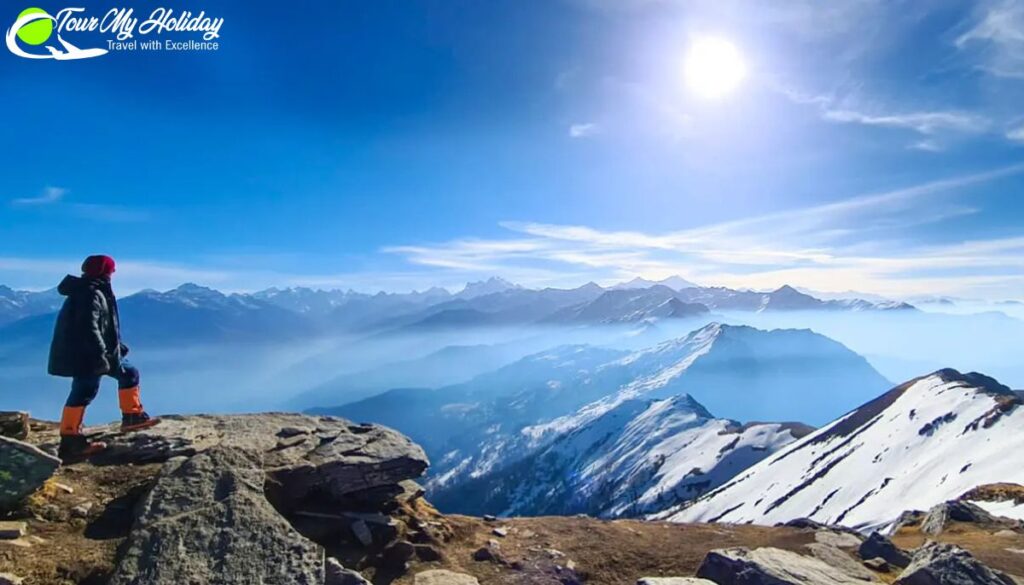The Chopta Chandrashila trek is located in the stunning Himalayan region of Uttarakhand. This 3-day trek takes you through some of the most picturesque spots in the state, including Chopta, Deoriatal, the Tungnath Shiva temple, and the Chandrashila peak at 4,000 meters.
Chopta, a charming hill station, is known for its meadows and evergreen forests, offering fantastic trekking and camping opportunities. It’s also famous for its breathtaking sunsets.
Deoriatal is a serene emerald lake surrounded by dense rhododendron forests. Sitting at an elevation of 2,438 meters above sea level, the lake reflects the towering Chaukhamba peak in its crystal-clear waters, creating a stunning sight.
The Tungnath temple, located in the Rudraprayag district of Uttarakhand, is a sacred site dedicated to Lord Shiva. Positioned at an altitude of 3,680 meters, it holds the distinction of being the highest Shiva temple in the world.
Chandrashila, also known as the Moon Peak, is the summit above the Tungnath temple, standing at 4,000 meters. From the top, trekkers are rewarded with panoramic views of several majestic Himalayan peaks, including Mt. Nanda Devi, Chaukhamba Parvat, Kedar Dome, and Bandarpoonch.
The Tungnath trekking experience stands out for its unique combination of accessibility, natural beauty, and cultural significance. The trek’s appeal lies in how it caters to trekkers of all skill levels, offering a trail that is surprisingly manageable compared to many other Himalayan treks. With a relatively easy grade, this trek is suitable for people of all ages, from beginners to experienced trekkers, and it doesn’t require the level of physical endurance that more difficult summit treks in Uttarakhand demand. This makes it an ideal choice for those looking to experience the grandeur of the Himalayas without the grueling effort associated with more challenging trails.
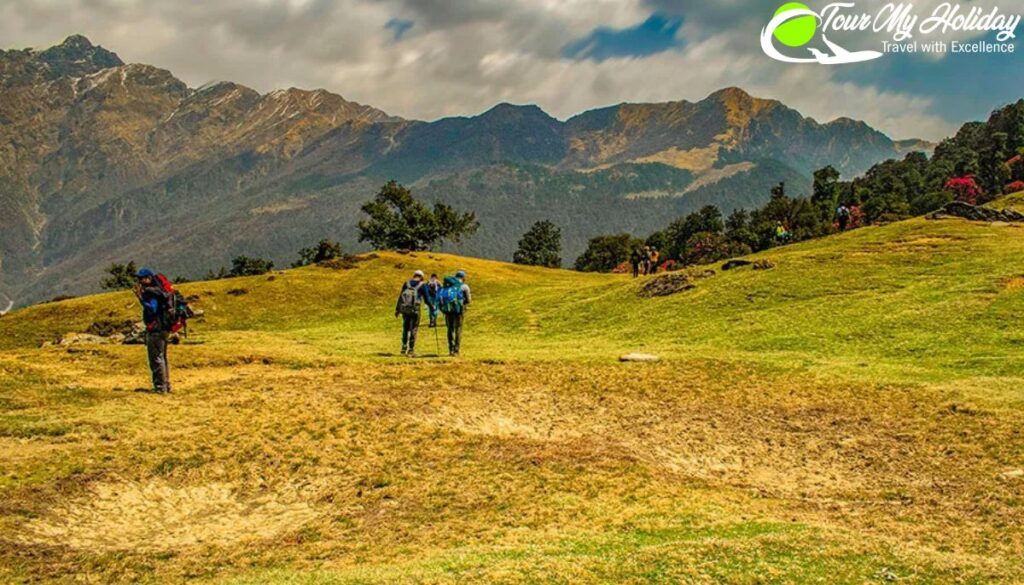
What truly makes Tungnath special is the ease with which you can access the trek. Unlike more remote treks in the region, Tungnath is among the most accessible Himalayan treks in Uttarakhand. The trailhead, Chopta, is well-connected by road, making it a great option for those looking to venture into the mountains without long, complicated travel arrangements. Whether you’re coming from nearby cities or villages, reaching the start of the trek is simple and straightforward. This accessibility factor has made it a popular destination for both tourists and pilgrims alike, offering an easy way to step into the heart of the Himalayas.
One of the major highlights of the Tungnath Temple trek is the spiritual and historical significance of the destination itself. The trek leads to Tungnath, which is home to the highest Shiva temple in the world, standing at an altitude of 3,680 meters. This sacred temple, dedicated to Lord Shiva, attracts devotees and trekkers alike, making it a perfect blend of adventure and spirituality. The journey to this revered site is not only a trek but also a pilgrimage for many, and reaching the temple brings a sense of fulfillment, both physically and spiritually. The serene atmosphere surrounding the temple, coupled with its cultural importance, adds a layer of profound meaning to the trek.
Beyond the temple itself, the Chopta Tungnath trek offers some of the most breathtaking views in the entire Himalayan range. The trek provides a 360-degree panoramic view of towering mountain peaks, including some of the most famous summits in Uttarakhand, like Mt. Nanda Devi, Chaukhamba, and Kedar Dome. These majestic peaks loom over the landscape, creating a stunning backdrop throughout the trek. The views are particularly awe-inspiring as trekkers gain altitude and get closer to the summit. Every step brings a new perspective of the vast, rugged landscape that makes the Himalayas so famous. The beauty of these natural landscapes combined with the serenity of the environment makes for a truly unforgettable experience.
Reaching the summit at Chandrashila, which stands at 4,000 meters, is another highlight of the Tungnath Temple trek. For many, summiting a peak at such a high altitude would be an overwhelming challenge, but the relatively easy nature of this trek makes this achievement attainable without the intense physical strain found in more difficult Himalayan climbs. This makes it an ideal option for trekkers who want to experience the thrill of reaching a high-altitude peak without the risks and challenges of a more strenuous summit. The accomplishment of standing at the top of Chandrashila, with views of the Himalayas stretching out before you, is a moment of triumph and a highlight of the journey.
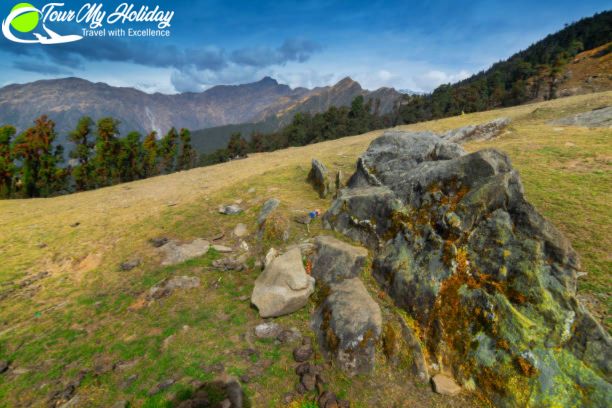
For wildlife enthusiasts, the Tungnath Temple trek offers a rich natural experience. The region is home to a variety of Himalayan bird species, and trekkers are likely to spot the vibrant Monal, the national bird of Nepal, along the trail. Its bright colors and distinctive features make it a favorite among birdwatchers. The trek also offers opportunities to spot other wildlife, including the elusive Himalayan Tahr, a wild goat species that roams the rocky slopes of the region. The chance to see these animals in their natural habitat adds another layer of excitement to the trek, making it a truly immersive experience in the heart of the Himalayas.
Tungnath Temple Trek
Another special feature of the Tungnath temple trek is its accessibility throughout the year. While many Himalayan treks are closed during the harsh winter months due to heavy snowfall, the Tungnath trek remains open year-round. In winter (from December to February), the trek becomes more challenging due to the snow and cold temperatures, but it is still accessible to those looking for a winter adventure. For those who want to avoid the snow and cold, the months from March to November offer a more moderate and comfortable trekking experience. This year-round accessibility makes the Tungnath trek a unique option for travelers who want to experience the Himalayas at different times of the year, with each season offering its own charm and challenges.
The Chopta Tungnath trek from Delhi is a special journey that combines ease of access, spiritual significance, stunning natural beauty, and rich wildlife experiences. Whether you are trekking to the highest Shiva temple in the world, enjoying panoramic views of the Himalayas, or simply soaking in the serenity of the region, the Tungnath trek offers something for everyone. Its relatively easy nature compared to other Himalayan treks makes it an accessible and rewarding adventure for trekkers of all ages and abilities, allowing you to experience the wonder of the Himalayas without the intense physical demands of more challenging climbs.
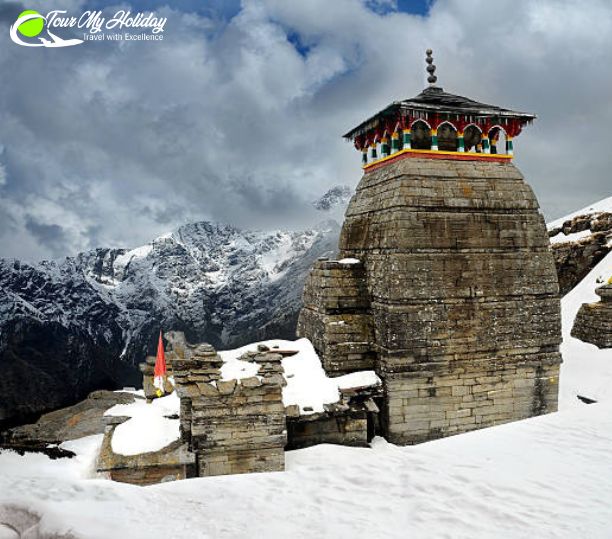
Chopta Chandrashila Trek: A Majestic Journey Through the Himalayas
The Chopta Chandrashila trek is one of the most sought-after high-altitude trekking experiences in Uttarakhand, attracting trekkers and adventure enthusiasts from all around the world. The Chandrashila Summit trek offers a spectacular journey through the stunning Garhwal Himalayas, culminating at an elevation of about 4,000 meters above sea level. The route provides breathtaking views of several prominent peaks, including Nanda Devi, Trisul, Kedar Peak, Bandarpunch, and Chaukhamba. These towering mountains provide an awe-inspiring backdrop throughout the trek, making it a must-do for anyone who loves the serenity and grandeur of the Himalayas.
A Glimpse into the Spiritual Significance of Tungnath Temple
At the heart of the Tungnath trek lies the Tungnath Temple, a revered pilgrimage site that holds deep religious and historical significance. The temple is the highest Shiva temple in the world and one of the five temples of the Panch Kedar—a group of temples dedicated to Lord Shiva, located in the Garhwal region of Uttarakhand. The Tungnath Temple stands at an impressive 3,680 meters, offering not just a spiritual experience, but also an extraordinary view of the surrounding landscapes.
The name “Tungnath” is derived from the words “tung,” which means weapon, and “nath,” which signifies Lord Shiva, symbolizing the mighty power of the deity worshipped here. The temple is nestled in a breathtaking natural setting, surrounded by dense forests, rolling meadows, and towering peaks, adding to its mystique and tranquility.
The Mythological Legend of Tungnath Temple
The legend associated with the Tungnath Temple adds a deep layer of mythological and spiritual significance to this already remarkable trek. According to the ancient tale, after the Kurukshetra war, the Pandavas, burdened with the guilt of killing their cousins, sought redemption for their sins. They were advised by the sage Vyasa to worship Lord Shiva, who would absolve them of their transgressions.
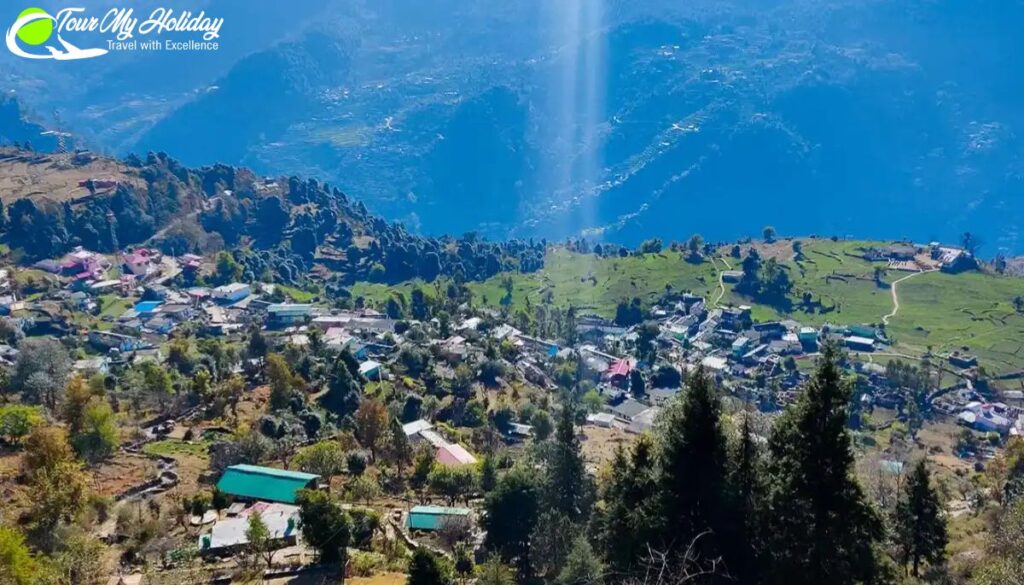
However, Lord Shiva, unwilling to forgive them so easily, decided to avoid their plea. In order to elude the Pandavas, he transformed into a bull and took refuge in Guptakashi, a place in the Garhwal region. Despite his efforts to escape, the Pandavas were determined to find him, and through a series of events, they eventually managed to catch the bull-form of Shiva.
At the moment of capture, Lord Shiva, in his bull form, vanished into the ground, and his body appeared in parts at five distinct locations across the region. These places are now home to the five temples of the Panch Kedar, which are highly revered by pilgrims:
- The hump of the bull is believed to have appeared at Kedarnath.
- The limbs of the bull are said to have appeared at Tungnath.
- The face of Lord Shiva is believed to have emerged at Rudranath.
- The stomach (nabhi) is found at Madhyamaheshwar.
- The hair of Lord Shiva is said to have appeared at Kalpeshwar.
The Pandavas, in their devotion, built temples at these sites to honor Lord Shiva, and they became important pilgrimage destinations for Hindus. The Tungnath Temple, being the second of the five temples, holds a special place in the hearts of devotees who undertake the trek to seek blessings and redemption.
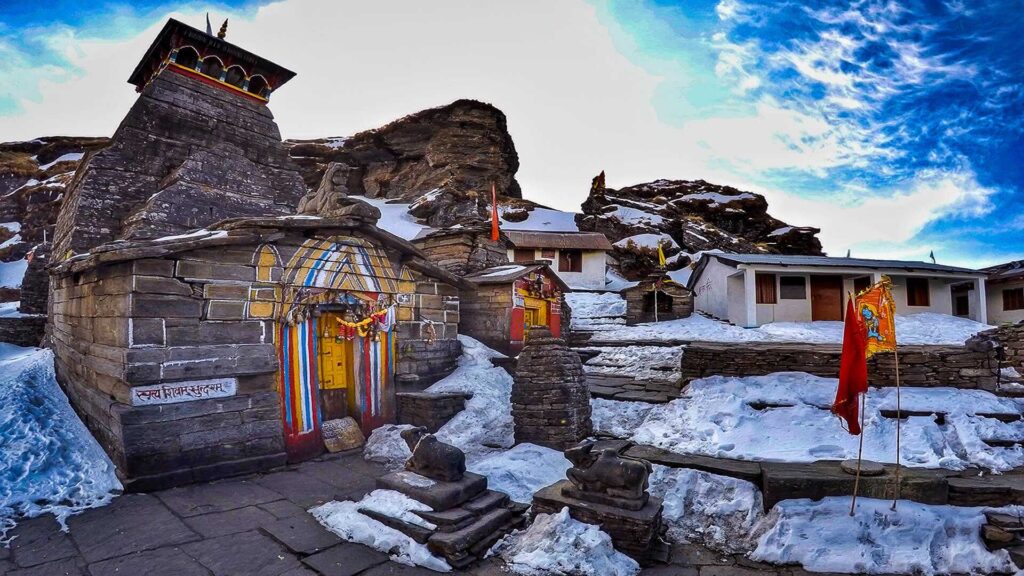
The Journey to the Highest Shiva Temple
Reaching the Tungnath Temple involves a beautiful and invigorating trek through forests of deodar, oak, and rhododendron, as well as vast open meadows. Along the way, trekkers are treated to spectacular views of the surrounding Himalayan peaks. As you ascend, the air grows thinner, and the serenity of the landscape becomes even more profound.
The final stretch to the Tungnath Temple is a steady climb, but the effort is well worth it. Once at the temple, trekkers are rewarded not only with spiritual fulfillment but also with panoramic views of the towering peaks of the Garhwal Himalayas, including Nanda Devi, Kedar Dome, and Chaukhamba.
After visiting the temple, many trekkers choose to hike further up to Chandrashila Peak, which stands at 4,000 meters. This summit offers one of the most awe-inspiring views in the region, with a 360-degree panorama of the surrounding Himalayan peaks, making it a perfect spot for photography and meditation.
The Spiritual and Scenic Legacy
The Chopta Chandrashila trek from delhi is a perfect blend of natural beauty, adventure, and spiritual significance. It is an opportunity not only to experience the grandeur of the Himalayas but also to connect with the deep-rooted spiritual heritage of the region. Whether you are a seasoned trekker, a spiritual seeker, or simply a lover of nature, this trek offers something unique for everyone.
The legend of the Pandavas and their quest for redemption through the worship of Lord Shiva adds a deep sense of reverence and awe to the trek. Standing at the Tungnath Temple, amidst the towering peaks and lush landscapes, you can’t help but feel the connection to the ancient stories that have shaped the region.
For those who undertake this trek, the journey becomes more than just a physical challenge. It is an exploration of history, mythology, and spirituality, set against the backdrop of the breathtaking Garhwal Himalayas. Whether you come for the spiritual journey or the sheer beauty of the mountains, the Chopta Chandrashila trek promises an unforgettable experience.
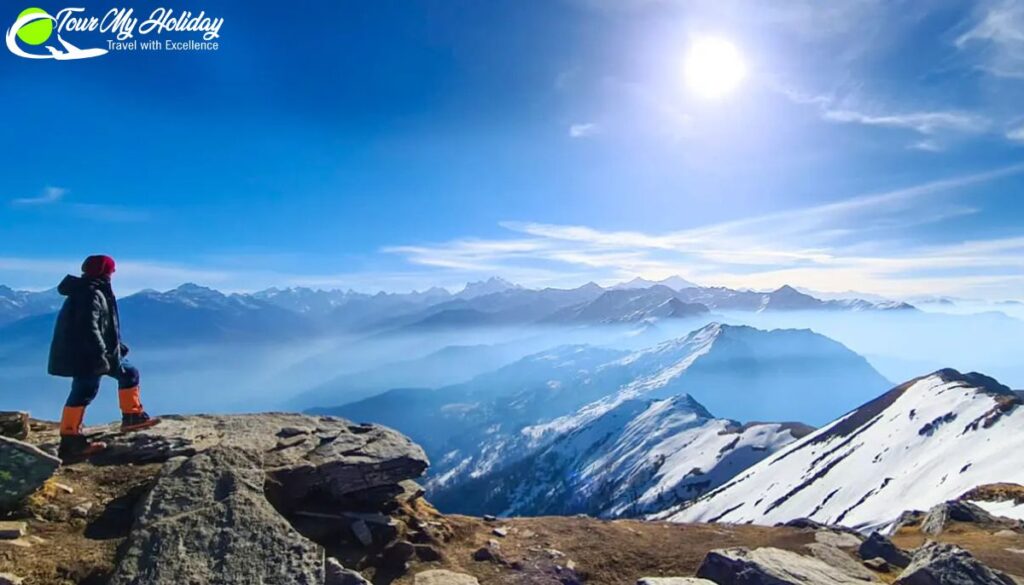
How to Reach the Base Camp of the Chandrashila Tungnath Trek – Chopta: The Mini Switzerland of India
Chopta Village, often referred to as the Mini Switzerland of India, is the gateway to the Chopta Tungnath Trek, offering a mesmerizing blend of serene landscapes, lush meadows, and breathtaking views of the Himalayan ranges. Located at an altitude of around 2,680 meters above sea level, it is the perfect starting point for adventurers looking to explore the majestic Tungnath Temple and summit Chandrashila Peak. Getting to Chopta is relatively simple, and you can choose from a variety of transportation options depending on where you are traveling from.
Here are the main ways to reach Chopta Village:
1. By Train:
The nearest major railway station to Chopta is Haridwar Junction, located approximately 215 kilometers away. Haridwar is well-connected to major cities across India, making it an easily accessible starting point for your journey to Chopta.
- From Haridwar: After reaching Haridwar, you can hire a private taxi or take a shared cab to reach Chopta. The drive takes around 7-8 hours depending on the road conditions and weather. Alternatively, you can take a bus to Ukhimath, a nearby town, and then hire a taxi to Chopta, which is about 30 kilometers from Ukhimath.
If you’re arriving by train from places like Delhi, Mumbai, or Rishikesh, Haridwar serves as a convenient stop to continue your journey toward Chopta.
2. By Air:
The nearest airport to Chopta Village is Jolly Grant Airport in Dehradun, situated around 225 kilometers from the village. Dehradun Airport is well-connected to major cities like Delhi, Mumbai, and Bangalore, and flights are available regularly, making it an efficient option if you’re traveling by air.
- From Jolly Grant Airport: Upon arrival at the airport, you can hire a private taxi or opt for a shared taxi to reach Chopta Village. The drive from the airport to Chopta takes around 8-9 hours, depending on the weather conditions and road status. It’s a scenic route that winds through the picturesque landscapes of Uttarakhand, providing a first taste of the region’s natural beauty.
Alternatively, you can also take a bus from Dehradun to Ukhimath, and then a taxi to Chopta. While this may take longer, it’s a more affordable option for travelers on a budget.
3. By Bus:
Traveling by bus is another popular and budget-friendly way to reach Chopta. Buses, both government-operated and private, are available from several major cities in Uttarakhand, including Dehradun, Rishikesh, and Haridwar. The buses typically travel to Ukhimath, which is the nearest town to Chopta.
- From major cities like Dehradun, Rishikesh, and Haridwar: You can board a bus heading toward Ukhimath. The bus journey takes approximately 6-7 hours, depending on your departure city and road conditions. Once you reach Ukhimath, you can hire a shared taxi or private vehicle to reach Chopta, which is around 30 kilometers away. This last stretch of the journey takes about 1 hour by taxi.
4. By Private Car or Taxi:
For those who prefer convenience and flexibility, hiring a private car or taxi from any major city in Uttarakhand, such as Dehradun, Haridwar, or Rishikesh, is an ideal option. A direct drive to Chopta from these cities typically takes around 7-9 hours. Hiring a private vehicle ensures a comfortable and direct journey, though it will be more expensive than other modes of transport.
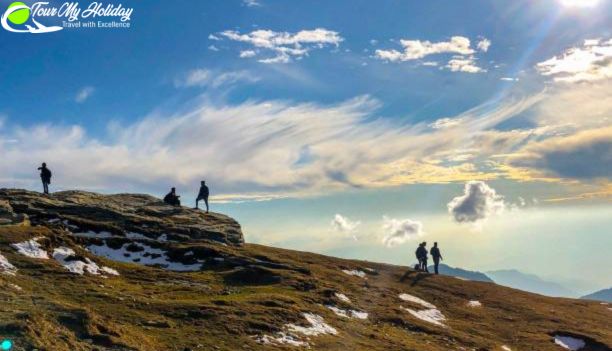
Travel Tips for Reaching Chopta:
- Road Conditions: The road leading to Chopta is winding and can be tricky in some areas, especially during the monsoon season (June to September) or winter months (December to February). Always check the road conditions before planning your trip, as heavy rainfall or snowfall can cause landslides or road blockages. Make sure to travel with a reliable driver if you are hiring a taxi.
- Weather Considerations: The weather in Chopta can change rapidly, with temperatures dropping significantly at night, even in summer. Carry warm clothing, especially if you’re traveling in the winter or shoulder seasons (November to March). In winter, snowfall can make the trek more challenging, so be prepared with the appropriate gear.
- Traveling During Off-Season: If you’re planning to travel during the off-season (from December to February), it’s advisable to check weather forecasts and road conditions in advance. Heavy snowfall may make the trail and roads difficult to navigate.
Why Tungnath Chandrashila is the Best Trek for You
- The Chopta Chandrashila Trek is a perfect blend of natural beauty, cultural richness, and thrilling adventure. Whether you are a seasoned trekker or someone who simply loves to immerse themselves in the wonders of the Himalayas, this trek has something special for everyone. From awe-inspiring views to spiritual experiences and physical challenges, here’s why the Chopta Chandrashila Trek should be at the top of your list:
- Scenic Beauty: A Visual Feast for the Eyes
- One of the main reasons why Tungnath Chandrashila stands out as a premier trekking destination is its stunning scenic beauty. The trek offers panoramic views of the majestic Himalayas, including snow-capped peaks such as Nanda Devi, Trisul, Chaukhamba, and Kedar Peak. As you ascend, the landscape transforms from lush green meadows to alpine forests and then to stark, pristine glaciers. The trek’s location amidst untouched wilderness means that trekkers are treated to views that feel untouched by modern civilization. The sight of the sun rising over the Himalayan range and casting golden hues on the snow-covered peaks is an unforgettable experience. The beauty of the Ganges River flowing through the valley below only enhances the trek’s visual charm, offering a unique balance of mountains, rivers, and valleys.
- Cultural Experience
- The Chopta Chandrashila Trek doesn’t just offer a beautiful outdoor adventure; it also takes you deep into the heart of local culture. As you traverse through remote villages and towns, you’ll get a chance to interact with the indigenous people of the region. The locals, mostly from the Garhwali community, are warm and hospitable, eager to share their traditions, way of life, and stories. You may come across ancient temples, traditional houses, and vibrant festivals that form an integral part of life in the Himalayas. The opportunity to witness these authentic cultural practices adds a rich dimension to the trek, making it a truly immersive experience.
- Adventure
- For the adventure enthusiast, the Chopta Chandrashila Trek offers a challenging yet rewarding experience. With an ascent to an altitude of 4,000 meters at Chandrashila Peak, the trek demands physical endurance and a fair amount of stamina. While the trek is not overly technical, it does require you to push yourself, especially when trekking through high-altitude terrains, rocky paths, and snow-covered trails during the winter months. Whether you’re a seasoned trekker or a beginner looking to test your limits, this trek provides ample opportunity for personal growth and achievement. The final push to Chandrashila is a moment of triumph, as you are rewarded with sweeping views of the mighty Himalayan peaks, making all the hard work worthwhile.
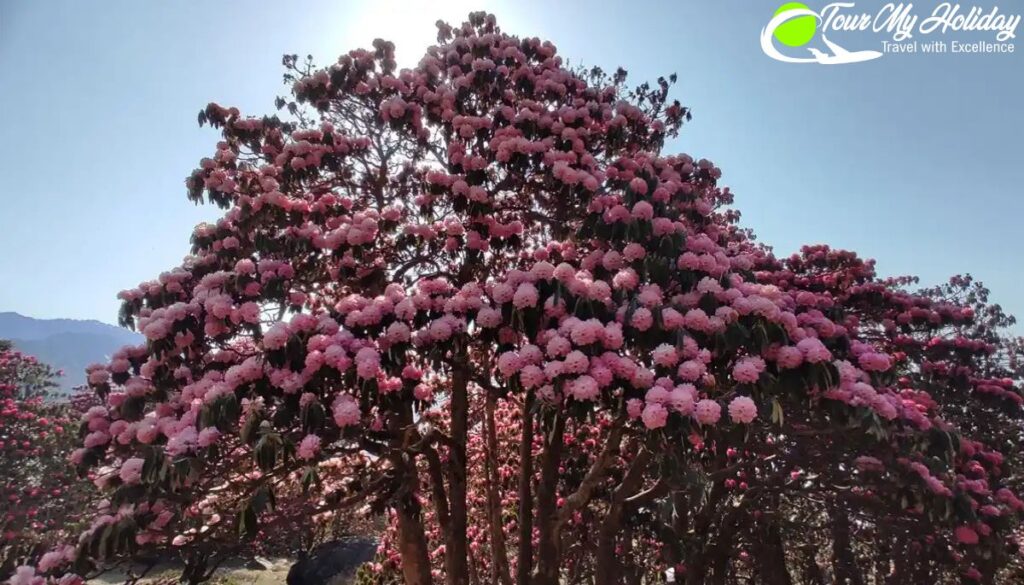
- Spiritual Significance: A Journey of the Soul
- What sets the Chopta Chandrashila Trek apart from other treks is its spiritual aura. The trek is not only about physical endurance and stunning views; it also offers a deeply spiritual experience. Tungnath Temple, the highest Shiva temple in the world, is a major attraction along the trail. Pilgrims and trekkers alike make their way to this revered temple, which holds great significance in Hindu mythology. The temple’s serene atmosphere, coupled with the breathtaking views of the Himalayas, creates a unique sense of peace and tranquility. Many trekkers also choose to visit Chandrashila Peak, a place associated with Lord Rama’s meditation, adding to the spiritual richness of the trek. Whether you are seeking spiritual solace or just looking to connect with nature, the Tungnath trek offers a beautiful opportunity for reflection.
- Accessibility: A Year-Round Trek
- Unlike many high-altitude treks that are only accessible during certain months due to harsh weather conditions, Tungnath Chandrashila is a year-round trek. While the peak summer months (May to June) offer pleasant weather, the winter months (December to February) offer a completely different experience, with the possibility of trekking through snow-covered trails. The fact that the trek is accessible in different seasons gives you the flexibility to plan your trip based on your preference for either warmer or cooler weather. Whether you enjoy the lush greenery of spring or the snowy allure of winter, Chopta tour package caters to different trekking experiences, ensuring that there’s something unique to enjoy throughout the year.
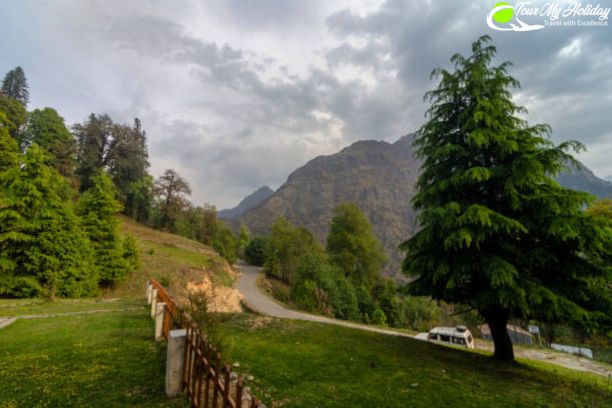
Wildlife and Natural Diversity: A Hidden Paradise for Nature Lovers
- For nature enthusiasts, the Chopta Chandrashila Trek offers a glimpse into the rich biodiversity of the region. The trek passes through dense forests filled with deodar, oak, and rhododendron trees, which are home to various species of wildlife and birds. As you trek, keep an eye out for the stunning Himalayan Monal (the national bird of Nepal) and Himalayan Tahr. You might also encounter various other species of birds, butterflies, and even small mammals in the wilderness. The natural beauty and diverse wildlife make this trek an ideal destination for nature lovers and photographers looking to capture the unique beauty of the Himalayas.
- Sense of Accomplishment: Achieve a Himalayan Summit
- Finally, the Chopta Chandrashila Trek offers the ultimate sense of accomplishment. Reaching Chandrashila Peak, standing at 4,000 meters, is a significant achievement. The sense of triumph you feel after conquering a Himalayan peak, especially one with such stunning views, is unmatched. Whether you’re an experienced mountaineer or someone new to high-altitude trekking, summiting Chandrashila will give you a deep sense of pride and satisfaction. The scenic vistas from the summit, including views of peaks like Kedar Dome, Nanda Devi, and Bandarpunch, make the trek even more worthwhile.
The Chandrashila Trek is much more than just a hike; it’s an experience that combines scenic beauty, spirituality, adventure, cultural immersion, and a sense of accomplishment. It offers something for every kind of trekker—whether you’re seeking a physical challenge, a spiritual journey, or simply a chance to connect with nature. With its year-round accessibility, unique wildlife, and rewarding views, the Chopta Chandrashila Trek is the perfect destination for anyone looking to explore the beauty and magic of the Himalayas.

